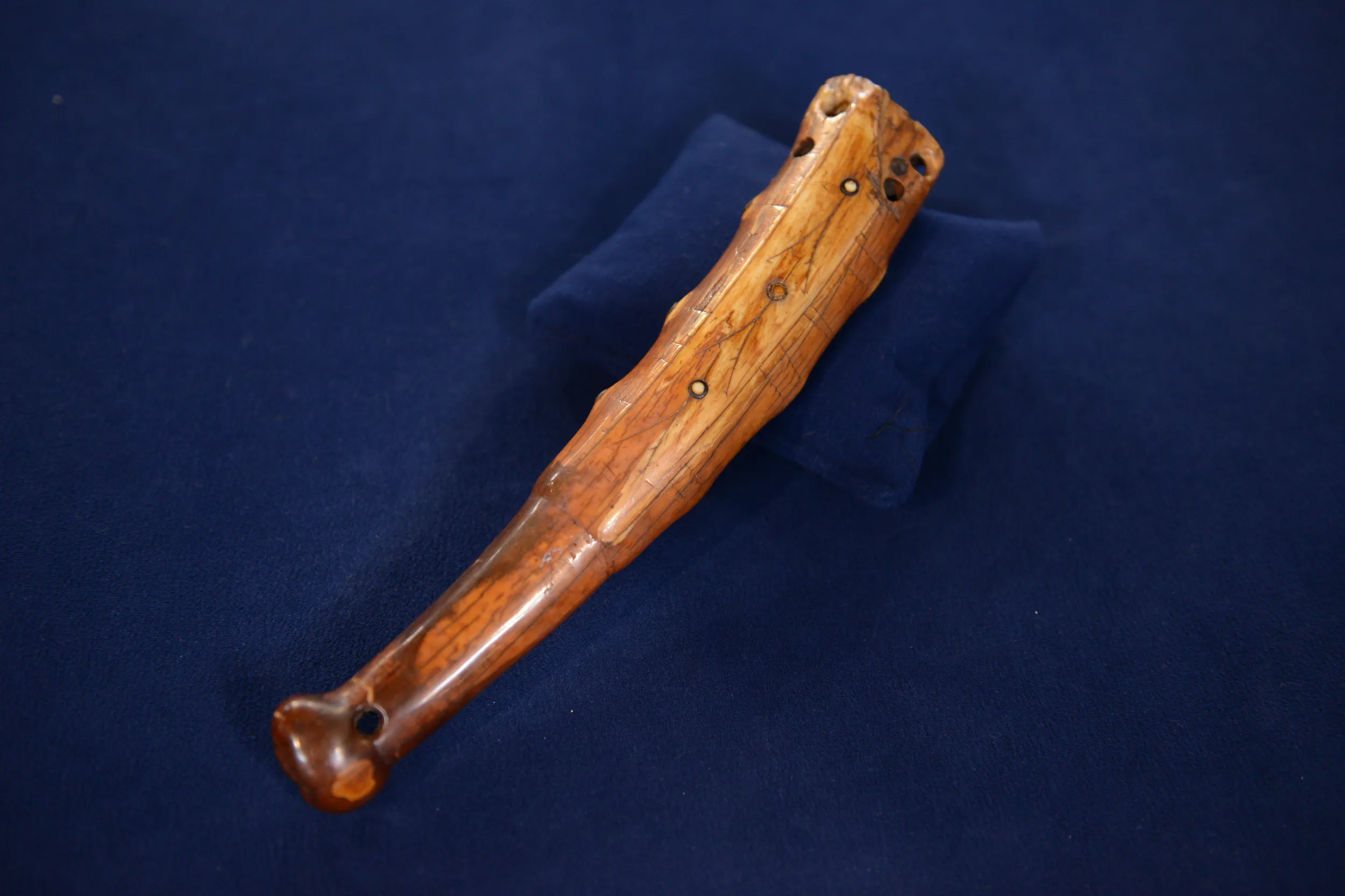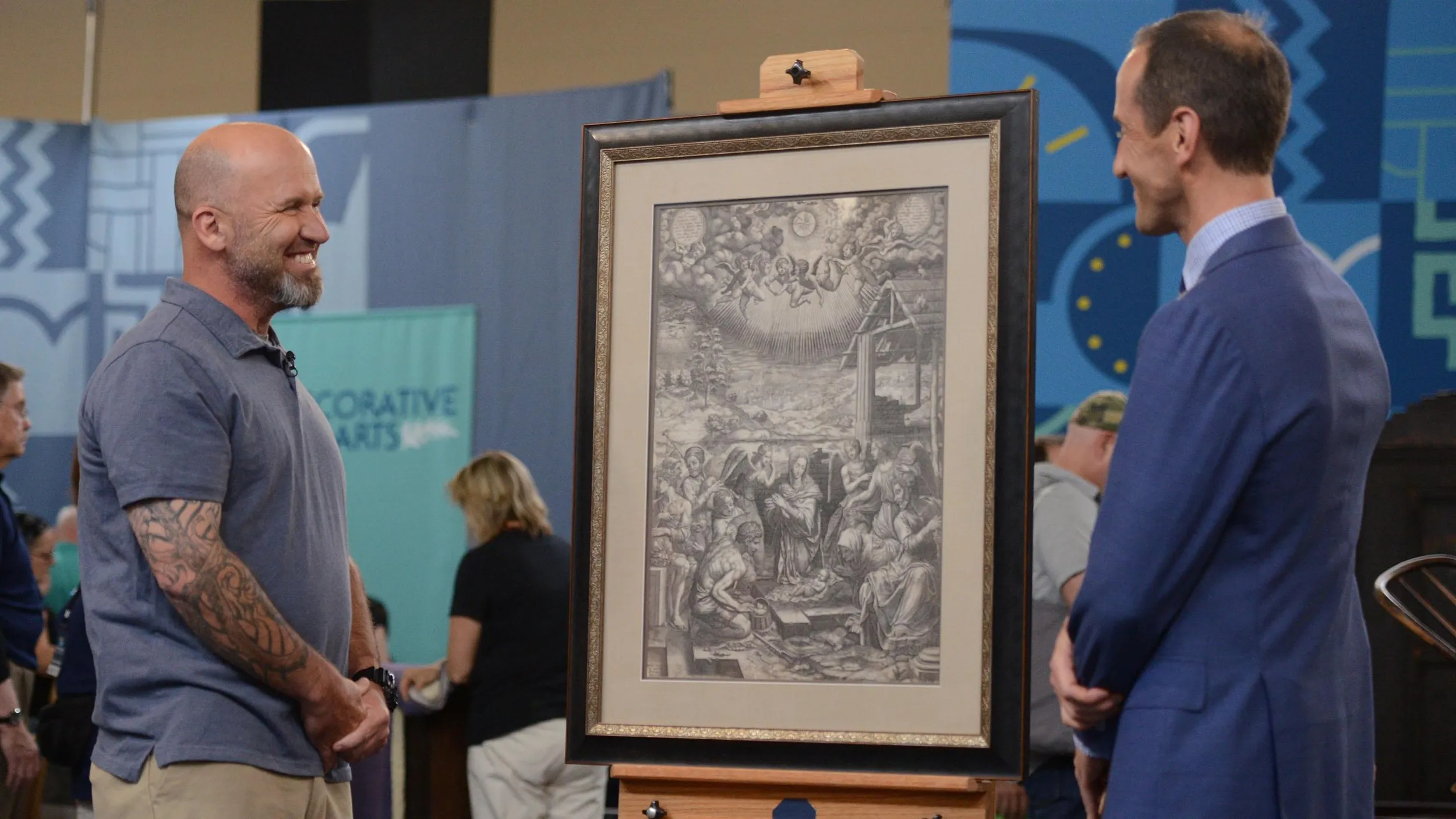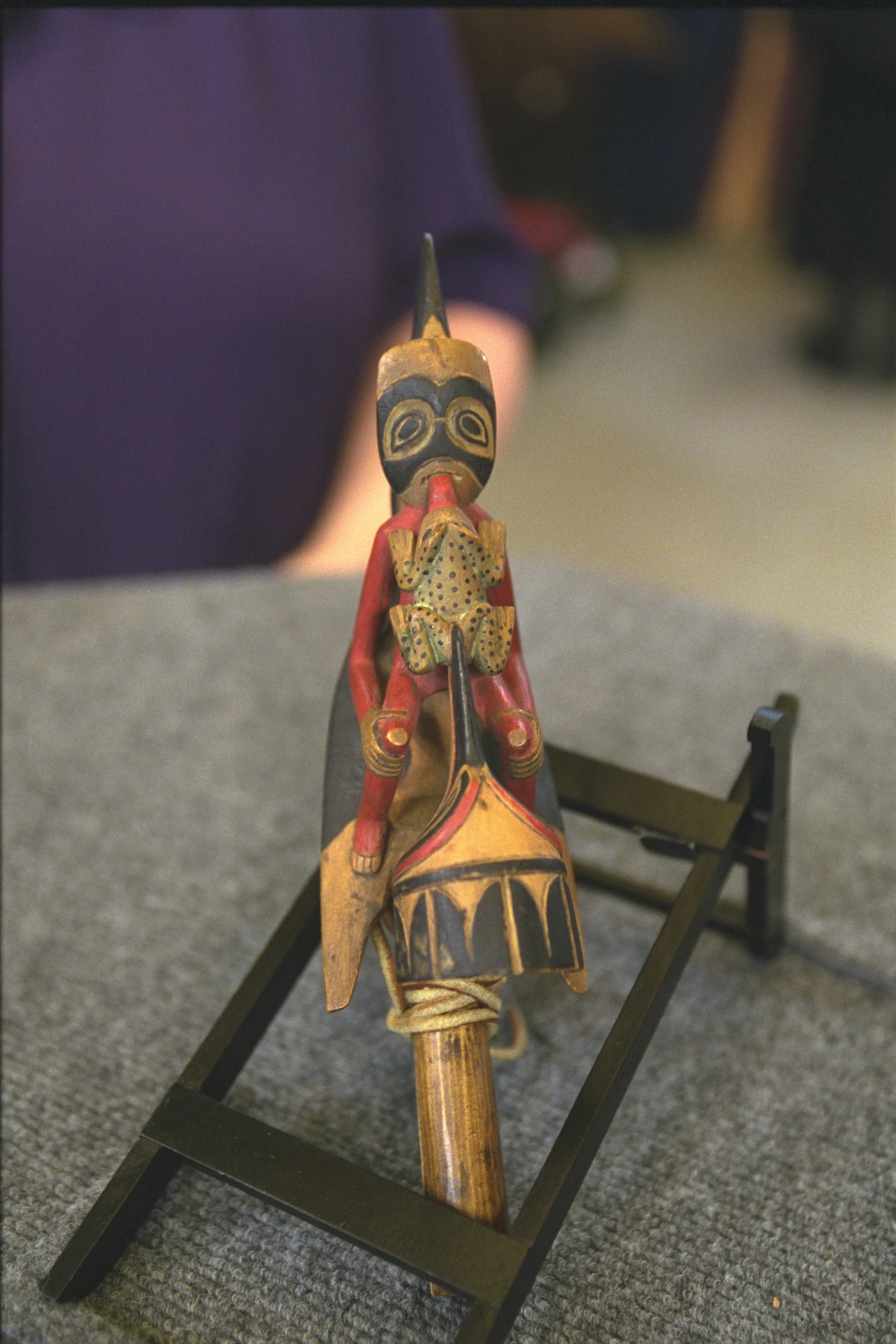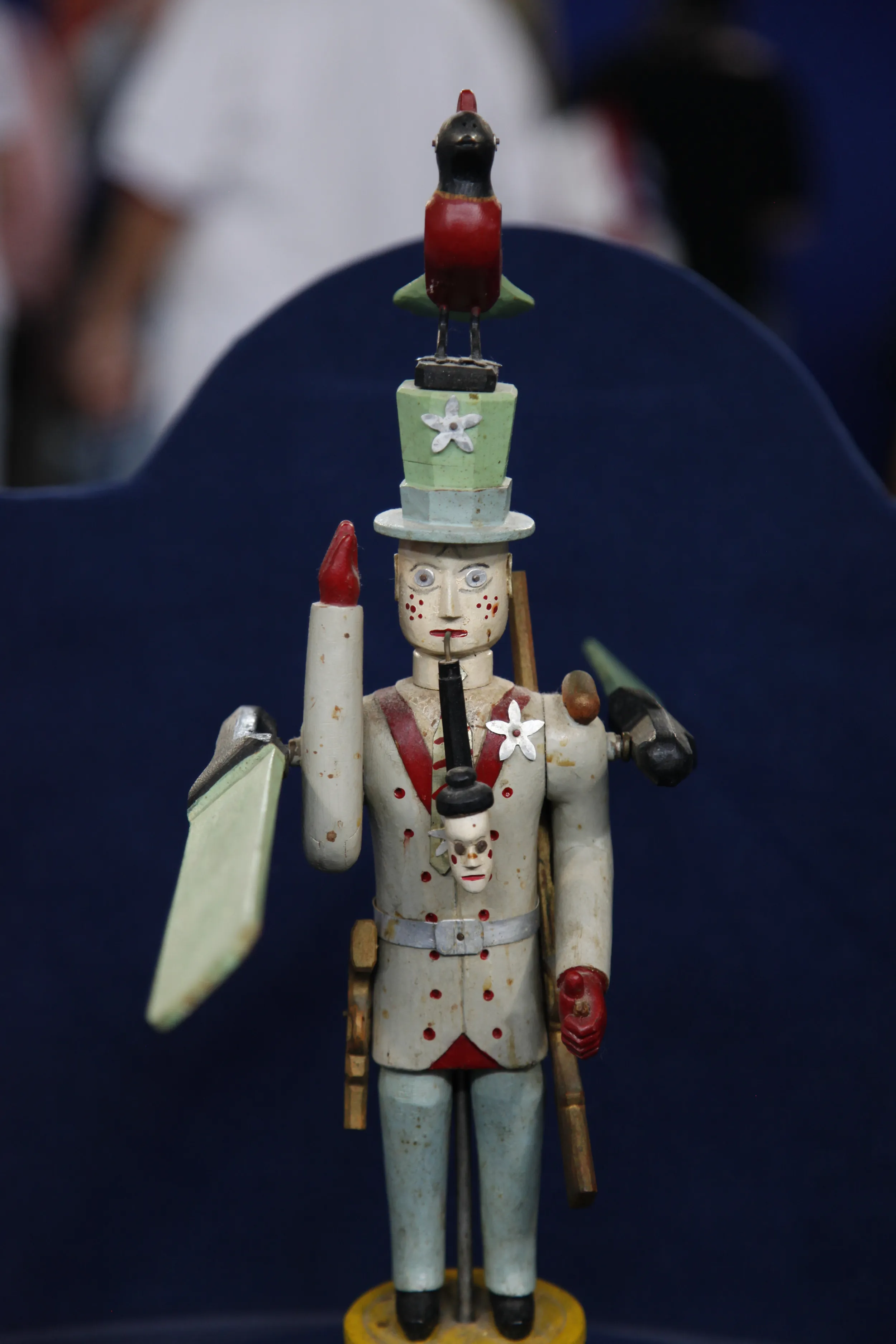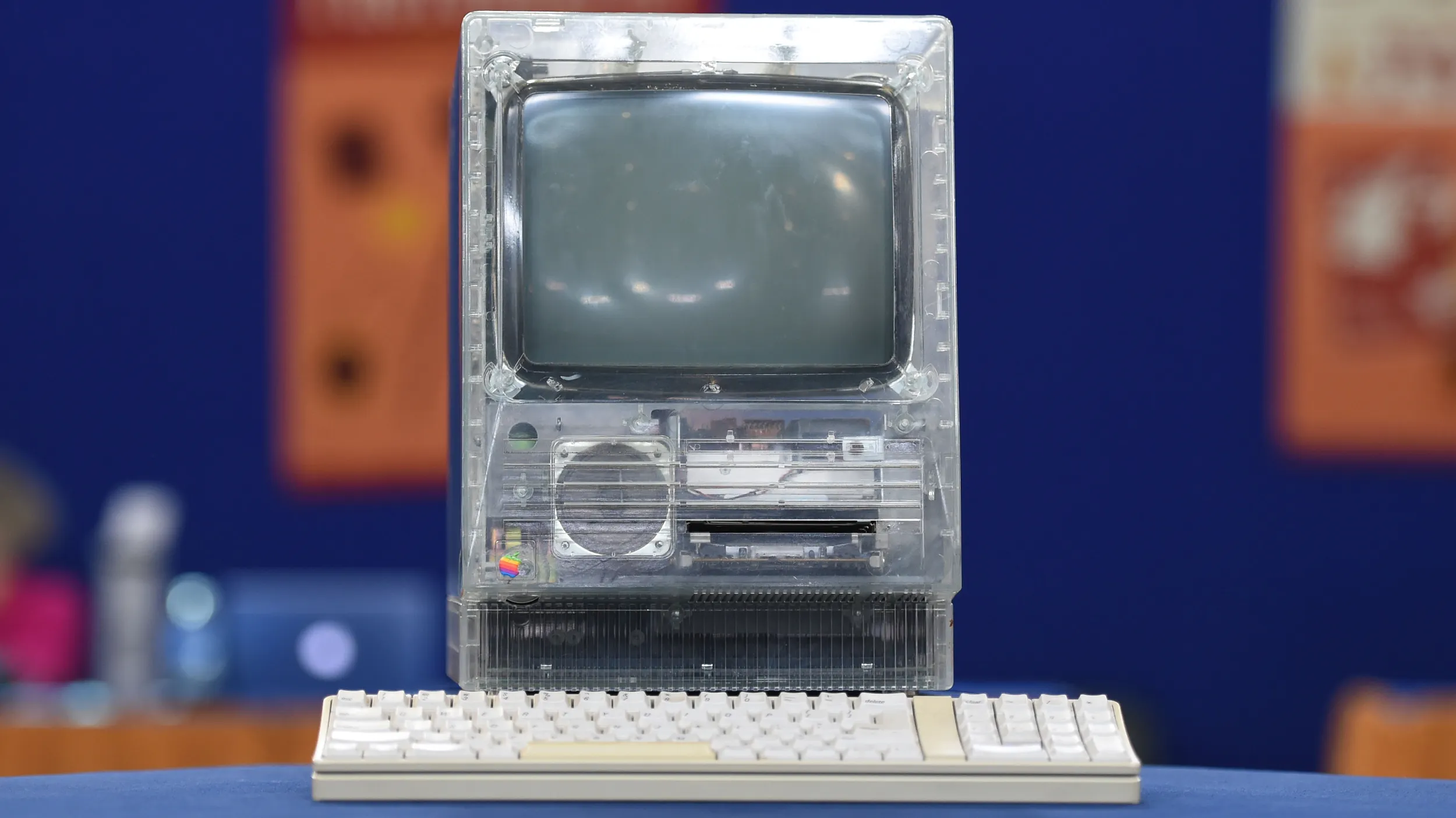GUEST: My wife has a 99-year-old aunt in Tucson, Arizona. She thought it was a shillelagh, and I liked the heft of it, so she said I could have it. She got it from her father, who was General Aikens, two-star general under MacArthur. I have no idea what it is. I know it's really fine to the hand.
APPRAISER: I'm really excited. It's an extraordinary object, and it's from the Eskimo. With reference whether we call it Eskimo or Inuit, it seems to be standard practice that the Inuit are the Canadian side of the people living up there. And that the Eskimo are on the American side.
GUEST: Right.
APPRAISER: And it's pre-contact, and probably is between the 12th and 15th century. So that's really early. But it's a masterpiece of Eskimo carving. You can see here it has these extraordinary inlaid circles, and they're on all sides. But what's really interesting is that here you have baleen, which is the black circle on the outside, which is inlaid with the walrus tusk, as well. It's a difficult thing to do. This is a part of the world which has a real paucity of natural objects. And one of the things about Eskimo art is that everything is functional. So it's really wonderful. They make something that's functional and make it as beautiful as they can. It's made from a walrus tusk, this piece. Now, the head, which is a beautiful carving at the end, probably represents the inua, which is the spirit of the object. We were a little unsure of what it might be. We think that it was an adze handle. An adze is a tool. It probably had a jade axe-head in the end of it, which would have been lashed to the haft here.
GUEST: Okay. Where do you get the jade?
APPRAISER: The jade is found in Alaska. On the islands out there.
GUEST: Okay, I didn't know that.
APPRAISER: The surface, which is a beautiful color, has this point and dart, which is found in the culture going all the way back to the Okvik period. At the end here we have a hole, it's pierced. And that would have had a thong on it, which would have probably stopped him from losing the object. Because this would have been a priceless object at the time.
GUEST: Is it ivory, then? Or walrus tusk?
APPRAISER: It's walrus tusk.
GUEST: Okay.
APPRAISER: And there's been a lot of controversy about the use of ivory and walrus tusk. The Eskimo are entitled to take the walrus and to use it and carve it-- their own-- and to sell it. So this fulfills all those requirements. The piece is also perfectly ergonomically designed. And it would have been used like this. It fits perfectly in the hand-- it's just a wonderful design. Do you have any idea what it's worth?
GUEST: Don't have a clue. I was going to give it to a museum, but they won't take it unless I have a valuation.
APPRAISER: I think a conservative retail price for this object would be between $30,000 and $50,000.
GUEST: (laughing) My wife's not going to believe that, but she's out there somewhere watching. (laughing) That's... Okay, I'll have to tell her. (laughs)

